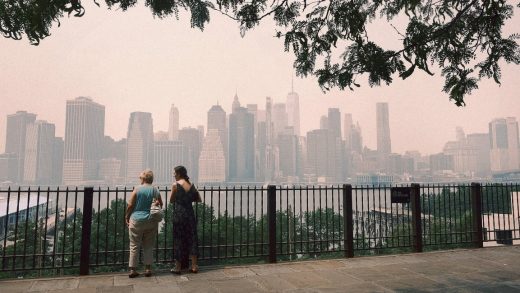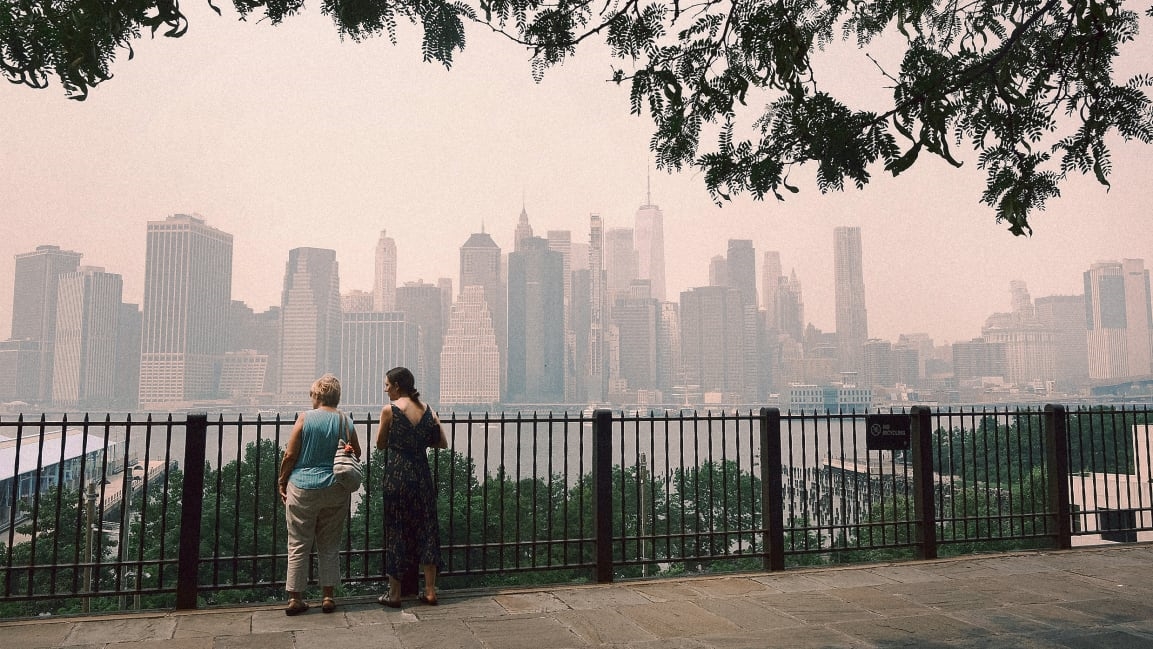There is no place you can go to escape wildfire smoke
In British Columbia, where nearly 300 wildfires were burning as of July 21 (some of the nearly 900 total fires burning in Canada), air pollution from the smoke is expected to last for months. But anyone hoping to temporarily escape by traveling won’t necessarily succeed. This week, smoke from the fires and others burning in the Western U.S. traveled thousands of miles to New York City, for example, making it one of the most polluted large cities in the world on Tuesday.
The same thing has happened before. In 2020, when wildfires burned a record-breaking 4 million acres in California, the smoke traveled as far Berlin. When massive fires burned in Australia earlier that year, the smoke traveled 6,800 miles to Chile. In the summer, smoke from fires in Siberia reached Canada. A 2013 study found that even though 22 American states hadn’t had a wildfire in their borders in a recent year, 8 had experienced medium to high levels of smoke drifting from fires elsewhere. Illinois, for example, had no wildfires at all, but had the second-highest number of citizens impacted by wildfire smoke.
“In California, we get air pollution from Asia, and the East Coast has always gotten air pollution from the West, and the East Coast gives their air pollution to Europe,” says Anthony Wexler, director of the Air Quality Research Center at the University of California Davis. “That happened last year. The smoke here was incredible, and if it’s off the charts here, you’re going to get some of it there that’s going to be noticeable. Air pollution is already not great in large metropolitan areas like New York City, and then you add something on top of it, and it starts getting into the unhealthy zone.” In New York City on Tuesday, when the air looked hazy and orange, the air quality index went over 150, an “unhealthy” reading that triggers recommendations to avoid exercise outside.
Wildfire smoke is filled with fine particles of soot called PM2.5, which is also found in exhaust from cars, that can reach deep into the lungs and enter the bloodstream, increasing the risk of asthma and heart attacks. One recent study suggests that the particles in wildfire smoke are as much as 10 times more harmful to human health than other air pollution. Long-term exposure to general PM2.5 pollution has been linked to heart disease, strokes, and increases in amyloid plaques, a risk factor for Alzheimer’s disease; though it’s not yet clear what the long-term effects may be of shorter spikes in wildfire smoke.
The thickest smoke, unsurprisingly, is found closest to the actual fire, but even diluted amounts can cause problems elsewhere. “In most places … at some points of the day, there is a trapping of air pollution closer to the ground,” says Wexler. “Whether a wildfire breaks through [that trapping] has to do with the strength of the inversion and heat generated in the wildfire.” In a strong fire, the heat breaks through what’s called the inversion layer, and smoke can get into the upper atmosphere and move east, but it’s more diluted. When it reaches a distant city, it can mix with other pollutants to increase ozone levels, which can worsen asthma and lung disease.
When wildfires move beyond forests and burn cars and houses filled with chemical-laden plastic, the pollution gets even worse. Wexler and other researchers are just beginning to sample air from communities on fire to study the toxicity. Little is known yet about the levels of this type of pollution, which isn’t measured by standard air quality monitors, or the impacts on health. But it’s something that can also travel long distances. “It will travel the same,” he says. “And it’s likely to be more toxic. A lot of plastics are chlorinated, and any kind of halogen—bromine, fluorine, chlorine—is bad for your health.”
That means wildfires are a problem for everyone, not just those who live in an area that’s most likely to burn. The problem is getting worse as climate change makes the planet hotter and drier. The number of dry, windy, warm days in California in the fall, peak fire season there, has doubled since the 1980s. The areas burned in California, Washington, and Oregon forests could grow by 78% by 2050—devastating those states, and pushing even more toxic smoke to other areas. “It’s almost unfathomable to imagine a situation in which the 2020 wildfire season becomes a regular occurrence or even a mild year, but that’s exactly what could happen in our future,” scientists Rebecca Miller, Katharine Mach, and Chris Field wrote in a recent op-ed. “We must dramatically reduce our greenhouse gas emissions.”
(23)



